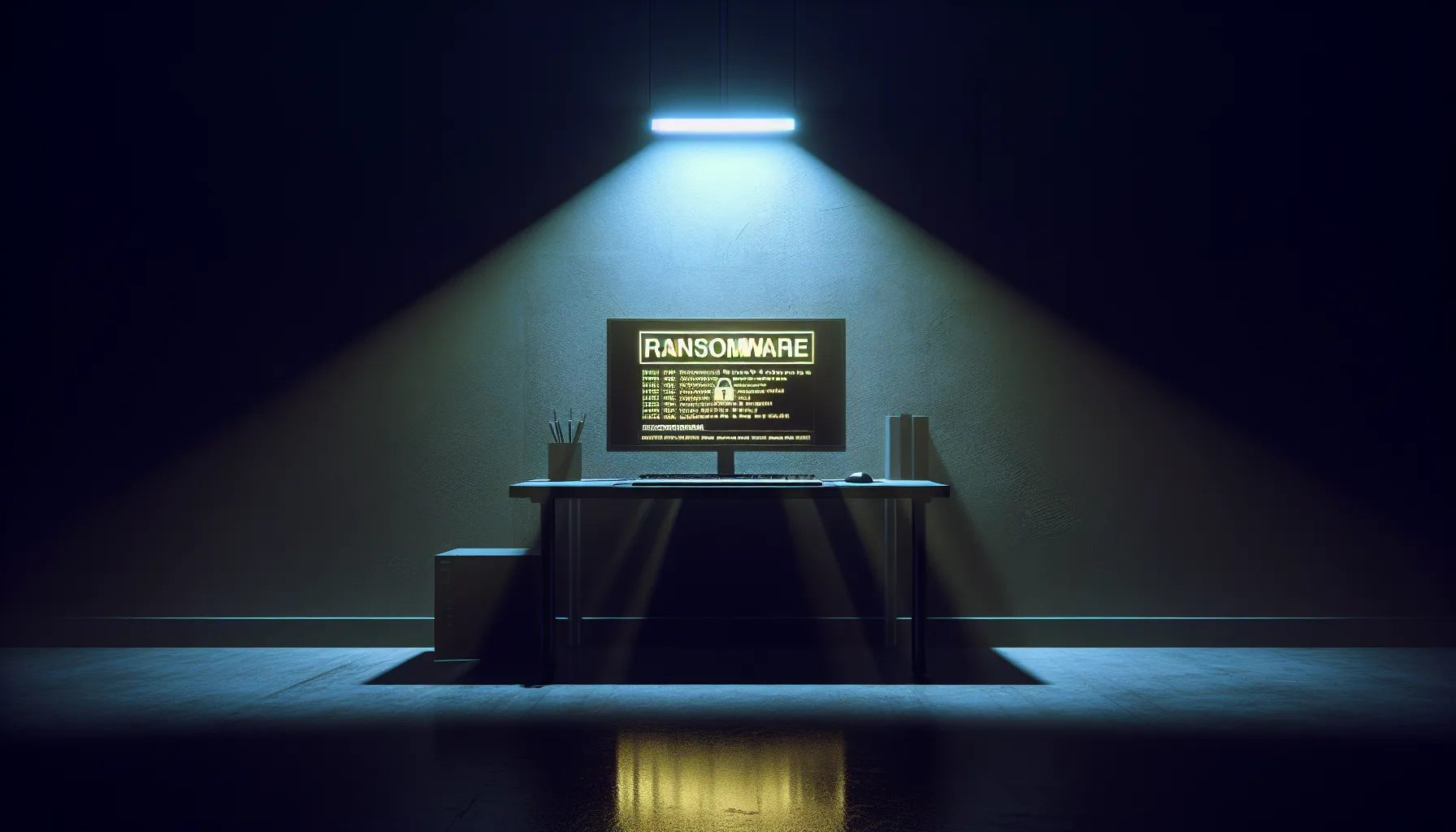Key Takeaways
- Ransomware is a type of malicious software that encrypts files or locks devices, demanding payment—typically in cryptocurrency—for access restoration.
- Common infection methods include phishing emails, malicious links, compromised websites, and exploiting unpatched software vulnerabilities.
- Attackers use advanced encryption algorithms like RSA and AES, making unauthorized file recovery nearly impossible without a decryption key.
- Variants of ransomware include crypto ransomware, locker ransomware, and double extortion ransomware, each with unique tactics to harm victims.
- High-profile ransomware attacks, such as WannaCry and Colonial Pipeline, have caused significant financial losses, data destruction, and operational disruptions.
- Preventative measures such as regular backups, software updates, safe online practices, and using security tools are essential to combat ransomware threats.
Ransomware—it’s a word that sends shivers down anyone’s spine, and for good reason. It’s one of the most aggressive forms of cyberattacks, capable of locking up your files and holding them hostage until you pay a hefty ransom. But how does it actually work? The process might seem like something out of a tech thriller, but understanding it can help us stay one step ahead of the attackers.
At its core, ransomware is a type of malicious software designed to encrypt your data, making it completely inaccessible. Hackers then demand payment, often in cryptocurrency, to unlock your files. It’s sneaky, fast, and incredibly disruptive. What’s even scarier is how easily it can spread—one wrong click on a suspicious link or attachment, and your entire system could be compromised. Let’s dive into how this digital menace operates and why it’s such a growing threat.
What Is Ransomware?
Ransomware is a type of malicious software designed to block access to data or systems until a payment is made. It targets both individuals and organizations by encrypting files, rendering them unusable without a decryption key.
Attackers often spread ransomware through phishing emails, malicious links, or compromised websites. For example, clicking on an infected email attachment or visiting a deceptive URL can trigger installation. Once installed, it locks the victim’s files and displays a ransom demand, typically in cryptocurrency like Bitcoin, to maintain anonymity.
Variants like CryptoLocker and WannaCry demonstrate how rapidly ransomware can evolve. Some forms even exfiltrate data before encryption, adding a layer of extortion by threatening to leak sensitive information.
How Does Ransomware Work?

Ransomware disrupts systems by infecting devices, encrypting files, and demanding payment. Its phases involve infection, encryption, and ransom demands.
Infection Methods
Attackers use deceptive tactics like phishing emails and malicious links. Clicking an infected attachment, such as fake invoices or shipping updates, installs the ransomware. Compromised websites also serve as entry points. Drive-by downloads occur when users unknowingly download malware by visiting a hacked website.
Attack paths often exploit unpatched software vulnerabilities. For instance, outdated operating systems like Windows XP became targets during attacks like WannaCry. Remote Desktop Protocol (RDP) vulnerabilities are another common vector criminals use to launch ransomware.
Encryption Process
Once inside a system, ransomware encrypts files using advanced algorithms. Common encryption methods include RSA and AES, making recovery nearly impossible without a decryption key. Attackers typically target critical data types, such as documents, spreadsheets, and media files.
Ransomware modifies file extensions to signal successful encryption. For example, files might display extensions like “.encrypted” or custom identifiers tied to the malware strain. Victims encounter a ransom note once the encryption process is complete, informing them of the attack.
Ransom Demands And Payment
Ransom notes instruct victims to pay a specific amount to regain access to their data. Payment is often requested in cryptocurrency, like Bitcoin, for anonymity. The ransom demand varies widely, from $200 for individuals to millions for large corporations.
Some attackers pressure victims further by setting payment deadlines or threatening to increase the ransom. Double extortion techniques involve stealing sensitive data before encryption, with additional threats to leak the stolen information if the ransom isn’t paid.
Types Of Ransomware

Ransomware comes in various forms, each with distinct features and tactics designed to maximize impact. Understanding the common types helps in identifying and responding to threats effectively.
Crypto Ransomware
Crypto ransomware encrypts files, rendering them inaccessible until a ransom is paid. It targets valuable data like documents, databases, and images. Attackers often use strong encryption algorithms, making unauthorized decryption nearly impossible. Notable examples include CryptoLocker and TeslaCrypt, both known for their widespread impact and aggressive demands.
Locker Ransomware
Locker ransomware locks users out of their devices instead of encrypting files. It typically displays a lock screen with a ransom note, preventing access to operating systems or essential functions. This type often affects non-technical users, exploiting their urgency to regain device access. Android devices have been frequent targets of locker ransomware campaigns.
Double Extortion Ransomware
Double extortion ransomware takes traditional attacks further by stealing data before encryption. It pressures victims by threatening to publish or sell stolen data in addition to denying access. This tactic increases leverage, as businesses face the risk of reputational damage. Notorious examples include Maze and REvil ransomware, known for their high-profile attacks on corporations.
Real-Life Examples Of Ransomware Attacks

Ransomware attacks have impacted organizations and individuals globally, with some cases highlighting the devastating potential of these cyber threats. Here’s a look at notable incidents and their consequences.
Notable Global Attacks
- WannaCry (2017): The WannaCry ransomware affected over 200,000 systems across 150 countries, targeting unpatched Microsoft Windows systems. Critical services, including hospitals under the NHS in the UK, suffered disruptions. Attackers demanded payments in Bitcoin, leaving many organizations scrambling to recover operations.
- NotPetya (2017): Initially masked as ransomware, NotPetya wreaked havoc by destroying system data irreversibly. With Ukraine as its primary target, this attack caused over $10 billion in global damages, impacting companies like Maersk and Merck.
- Colonial Pipeline (2021): This attack on a major US oil pipeline led to widespread fuel shortages across the East Coast. The DarkSide ransomware group demanded $4.4 million in cryptocurrency, which the company paid to restore operations.
Impact On Businesses And Individuals
Ransomware attacks disrupt business operations, leading to financial losses and reputational damage. Global shipping giant Maersk incurred costs exceeding $300 million after the NotPetya attack. Local governments and small businesses also face challenges, as limited IT resources make recovery expensive.
For individuals, ransomware can encrypt personal photos, documents, or financial records, erasing years of memories or essential data. Victims without secure backups or technical recovery options often resort to paying ransoms, adding to criminals’ incentives.
Preventing Ransomware Attacks
Combatting ransomware requires proactive measures to protect data and systems. Implementing safe practices, backups, and security tools minimizes risks effectively.
Safe Online Practices
I always remain cautious when interacting with emails or links. Recognizing phishing attempts by checking the sender’s details and avoiding suspicious links limits exposure to malware. Downloading files only from trusted sources ensures that no malicious software is inadvertently installed. Keeping all software updated addresses vulnerabilities, reducing potential entry points for ransomware.
Backup And Recovery Strategies
I regularly back up critical files to protect them against attacks. Storing these backups offline or on a separate network prevents ransomware from accessing them. Testing recovery processes ensures backups are functional when needed, minimizing downtime during an attack.
Using Security Tools
I rely on security software to detect and block ransomware. Installing antivirus programs, enabling firewalls, and using endpoint protection adds multiple layers of defense. Employing email filters ensures phishing attempts can’t reach my inbox. For data safety, I activate network-level protections, such as intrusion detection systems.
Conclusion
Ransomware is a serious threat that continues to evolve, targeting individuals and organizations alike. Staying informed and vigilant is key to reducing the risk of falling victim to these attacks. By adopting safe online habits, keeping systems updated, and investing in strong security measures, we can make it harder for attackers to succeed.
While no solution is foolproof, having reliable backups and a solid recovery plan can make all the difference. It’s all about being prepared and proactive to protect what matters most.
Frequently Asked Questions
What is ransomware?
Ransomware is a type of malicious software that encrypts files or locks users out of their devices, demanding a ransom—typically in cryptocurrency—for file decryption or system access recovery.
How does ransomware spread?
Ransomware spreads through phishing emails, malicious links, infected attachments, or compromised websites. Clicking on these can trigger the ransomware installation and encryption of files.
What are the common types of ransomware?
The common types include Crypto Ransomware (encrypts files), Locker Ransomware (locks devices), and Double Extortion Ransomware (steals and encrypts data, threatening leaks).
How can I protect myself from ransomware?
You can protect yourself by avoiding suspicious emails and links, downloading only from trusted sources, keeping your software updated, using security tools, and regularly backing up important files offline.
What are some famous ransomware attacks?
Examples include the WannaCry attack in 2017, NotPetya in 2017, and the Colonial Pipeline attack in 2021. These caused significant financial and operational damages globally.
Should I pay the ransom if affected?
Experts advise against paying the ransom since it does not guarantee data recovery and could encourage more attacks. Instead, focus on backups and professional recovery solutions.
Why do attackers often demand cryptocurrency as payment?
Cryptocurrency provides anonymity, making it difficult to track the perpetrators and trace the ransom payment.
What should I do if I fall victim to ransomware?
Disconnect the infected system from the network, avoid paying the ransom, report the incident to authorities, and seek professional help to recover and remove the ransomware.
What are the long-term consequences of ransomware attacks?
Ransomware can lead to financial loss, operational disruptions, data breaches, loss of sensitive information, and reputational damage for individuals and organizations.
How important are backups in ransomware protection?
Regular backups are crucial. They ensure you can restore your files without complying with ransom demands, especially if stored offline or in a secure, separate network.

